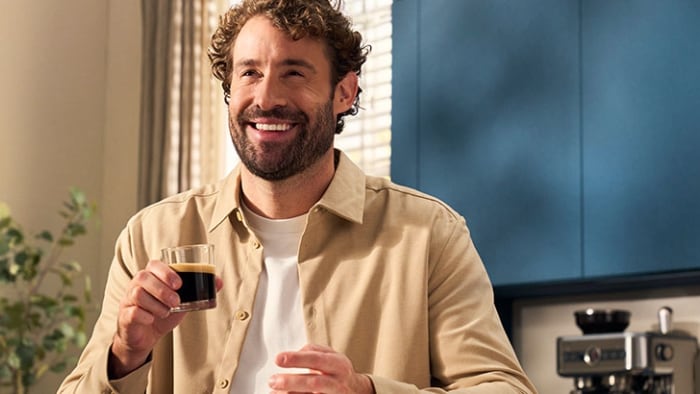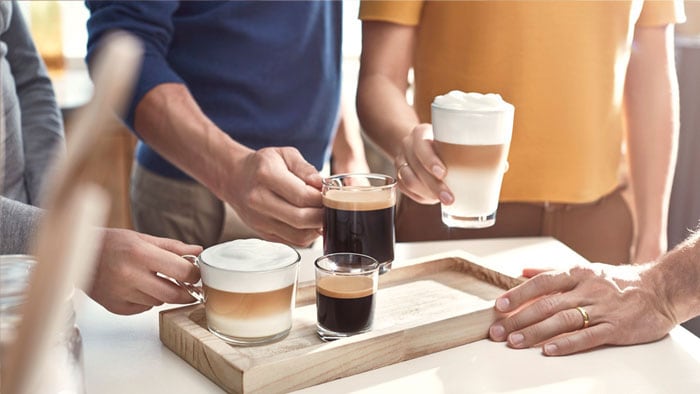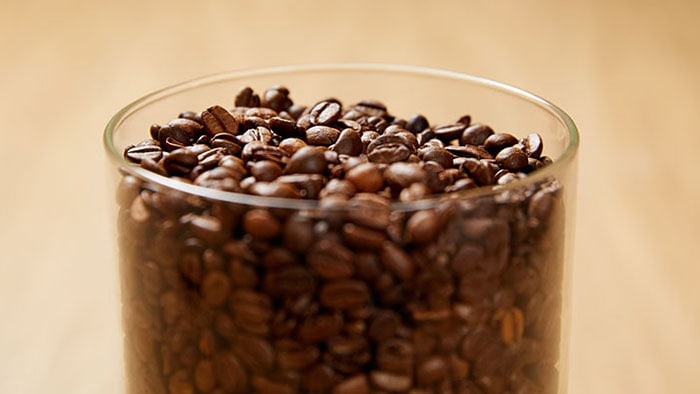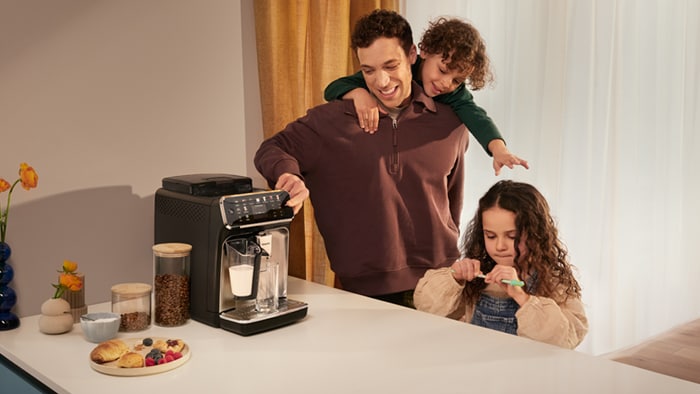Reading time: 4 Min
The difference between Espresso and Coffee
Espresso shots and your regular cup of coffee start with the humble coffee bean. But it’s how you brew them that creates such remarkably different and delicious drinks.
Read on to find out all the differences between espresso and coffee and discover the best way to drink espresso.
Espresso vs. Coffee
Let's first take a look at what makes regular coffee and espresso so distinct from each other.
What is espresso?
Espresso is a concentrated type of coffee brewed by forcing hot water at high pressure through finely ground coffee.
Traditionally, espressos are made from coffee beans that are very dark and are roasted longer than the beans in regular coffee.
That’s because darker roasts stand up well to the intense brewing process and have a bolder, richer taste.
You don’t have to stick to these rules though. You can make your espressos the way you want it.
Many people use light- and medium-roasted beans in their espressos because they like the flavour more.
Because it has such a strong flavour, espressos give these other coffee varieties the taste intensity they need that makes them so appealing.
So, while all espresso is coffee, not all coffee is espresso.
How espresso is made
First, buy high-quality coffee beans that are suitable for making espressos. Get the grind right The texture of ground coffee for an espresso machine should be similar to granulated sugar. The liquid espresso you brew should be about one to three times the amount of the dry coffee you started with. The portafilter basket is a small, perforated container that holds the coffee grinds. The portafilter locks the basket into your espresso machine. Make sure your espresso machine is preheated, with the water at 90-96°C. When you start brewing, the water in your espresso machine passes through the puck under high pressure.
To make espresso at home with an espresso machine, follow this quick and easy guide.
Choose your beans
You can either buy whole beans and grind them yourself or go for pre-ground espresso coffee instead.
Getting the right grind is important because if the beans are too finely ground, the espresso will taste bitter, sour, or burnt.
Get the mix right
So, for example, if you use three teaspoons of dry coffee, you should get about 37ml of espresso.
Add the grounds to the portafilter basket
Press the coffee grounds evenly into the portafilter basket using your tamper. Make sure you use the right amount of coffee for your shot size.
This creates your ‘puck’. The water in your espresso machine passes through the puck under pressure to extract flavours and oils from the grounds.
Preheat and insert the portafilter
Now, insert the portafilter into the machine.
You’re now ready to start brewing your espresso.
Start your espresso machine
This is how your machine quickly extracts the intense flavours from the grounds, giving you a rich, concentrated shot of espresso.
What you need
-
- Choose from 12 beverages
- LatteGo milk solution for silky smooth drinks
- Aesthetic black colour
- TFT display for great control
- Perfect drink temperature
-
- The EP4346/70 makes 8 beverages
- Smart LatteGo milk solution
- Sleek black design
- 5 aroma strength settings
- Philips LatteGo 4300 with TFT display
-
Series 3200
Bean to Cup coffee machine
EP3246/70
- Perfect drinks with the Philips LatteGo EP3246/70
- LatteGo technology for the perfect foam
- Silver colour to blend in with kitchen appliances
- Easy touch display
- 12 grinder settings and 3 aroma strength settings
What Is Espresso Crema?
Crema is the creamy, reddish-golden froth on the top of your espresso shot. Not only does it look inviting, it’s full of flavour, texture, and enticing aromas.
When you force hot water through coffee grounds at high pressure, it mixes the coffee bean oils and creates tiny, smooth bubbles called crema.
The perfect crema on espresso is smooth, foamy, and evenly coloured. It should linger on the top of your espresso for about two minutes before gently blending in.
Espresso crema adds richness and quality to your shots. It's the hallmark of a well-made espresso. It’s like the cherry on top of a cake.
How much Caffeine Is in an Espresso?
The average amount of caffeine in an espresso shot is about 63 milligrams of caffeine. In contrast, an eight-ounce cup of coffee contains about 95 milligrams of caffeine.
Caffeine levels in cafe espressos that you buy from coffee houses are often much higher.
Knowing how much coffee is in an espresso will help you work out whether your espresso has the caffeine you need to provide you with the energy boost you want.
Opinions vary on whether espresso is good for you as the recommended daily caffeine intake is 400 milligrams.
How to Enjoy Espresso
The easiest and fastest way to drink a coffee machine espresso is to sip it.
An espresso shot has three parts: the crema, the body, and the finish. Drinking it in three sips lets you enjoy each flavour separately.
Start with the crema, which adds creaminess and softens the espresso's intensity. After a couple of sips, the crema fades, but you can still enjoy the rest of your shot.
Take in the intense flavours. Swish the coffee in your mouth and run your tongue over your teeth after each sip.
Expect a strong mouthfeel with bitterness and some acidity. Depending on the coffee, you might also get fruity or citrus notes. Some beans even have flavours like dark chocolate.
As the espresso cools, its flavour changes again. This is the third and last part. Drink this sip before it gets too cool for the best taste.
If the espresso is too strong, you can add steamed milk to make a latte or frothed milk to make a cappuccino.
Another option is a macchiato which is a shot of espresso with a small dollop of foamed milk.
Can You Make Regular Coffee in an Espresso Machine?
References:
You can also use your espresso machine to make regular coffee as well.
Philips’ range of espresso machines makes up to 20 different types of coffee from cafe au lait and Americanos to iced cappuccinos and frothed milk.
[1] https://www.consumerreports.org/coffee/is-there-more-caffeine-in-espresso-than-in-coffee/








